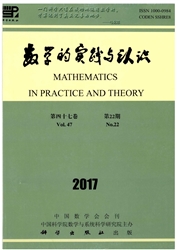

 中文摘要:
中文摘要:
This work considers those road networks in which there are multi-route choices for bifurcation-destination(or origin-destination) pairs, and designs a real-time variable message sign(VMS)-based routing control strategy in the model predictive control(MPC) framework. The VMS route recommendation provided by the traffic management authority is directly considered as the control variable, and the routing control model is established, in which a multi-dimensional control vector is introduced to describe the influence of route recommendations on flow distribution. In the MPC framework, a system optimum routing strategy with the constraints regarding drivers’ acceptability with recommended routes is designed, which can not only meet the traffic management authority’s control requirement but also improve drivers’ satisfaction with the route guidance system. The simulation carried out shows that the proposed routing control can effectively mitigate traffic congestion, reduces followers’ time delay, and improves drivers’ satisfaction with routing control in road networks.
 英文摘要:
英文摘要:
This work considers those road networks in which there are multi-route choices for bifurcation-destination(or origin-destination) pairs, and designs a real-time variable message sign(VMS)-based routing control strategy in the model predictive control(MPC) framework. The VMS route recommendation provided by the traffic management authority is directly considered as the control variable, and the routing control model is established, in which a multi-dimensional control vector is introduced to describe the influence of route recommendations on flow distribution. In the MPC framework, a system optimum routing strategy with the constraints regarding drivers' acceptability with recommended routes is designed, which can not only meet the traffic management authority's control requirement but also improve drivers' satisfaction with the route guidance system. The simulation carried out shows that the proposed routing control can effectively mitigate traffic congestion, reduces followers' time delay, and improves drivers' satisfaction with routing control in road networks.
 同期刊论文项目
同期刊论文项目
 同项目期刊论文
同项目期刊论文
 期刊信息
期刊信息
